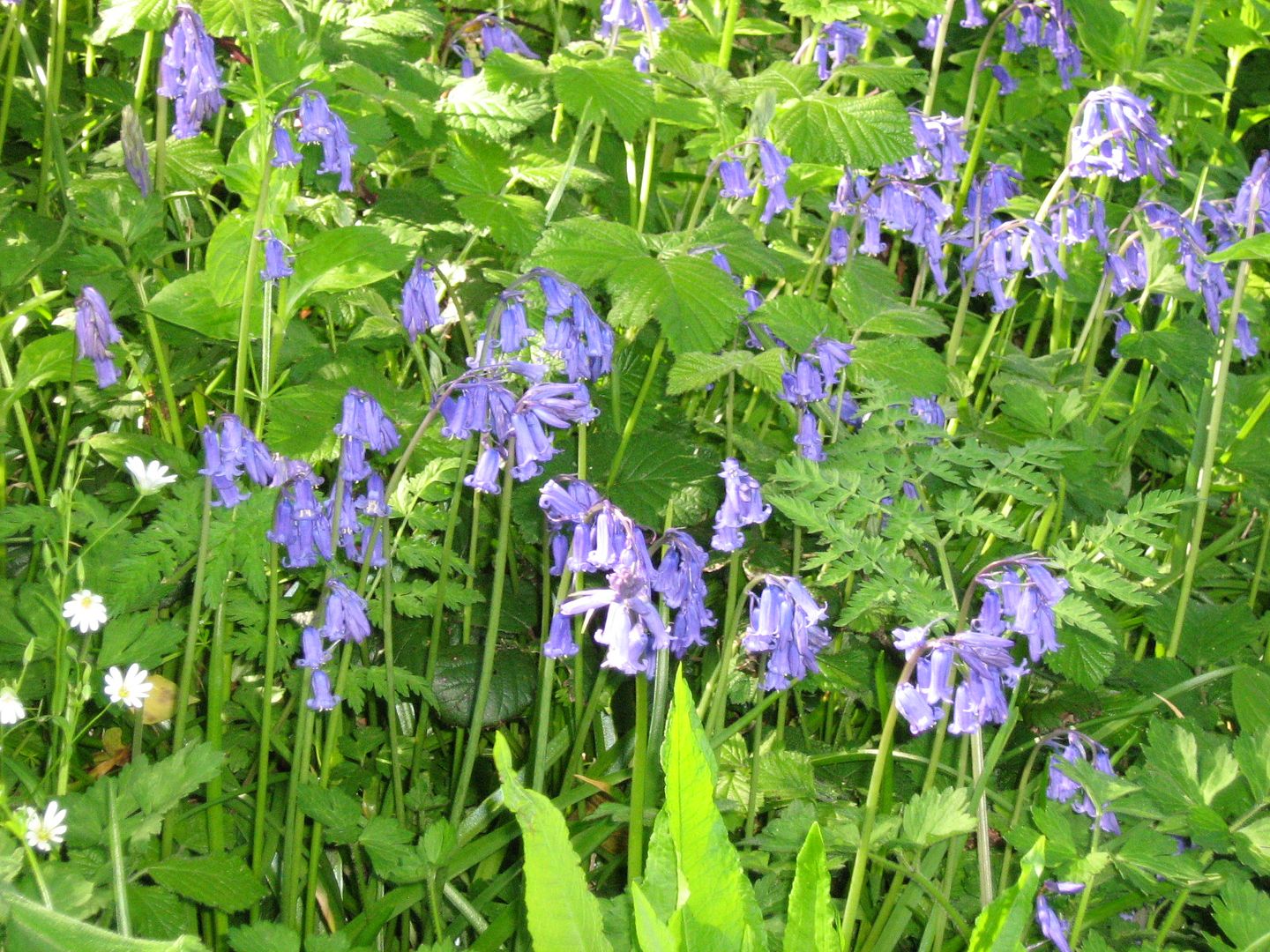The areas under the cover are the mosaic floors, which were in less than ideal condition, as last year they had trouble with the site flooding. Apparently they are working on improving drainage, after which the mosaics will be cleaned and restored. It must have been been quite a comfortable small residence though- they had a hypocaust (under-floor heating), and ample space.
We finished our mini-tour of Dorchester by walking down to the river, (the Frome) which neatly separates the town from the countryside.
Then it was time to head back and get out train for Weymouth. We found it a pleasant seaside town clearly devoted to the tourist trade. The beach quite exactly fit the descriptions I'd read of English beaches, complete with bathing huts. Despite the cool temperatures, the sun (and the Bank Holiday weekend) had the English out in droves.
They quite sensibly (given that they were at the beach when it was sixty degrees with a stiff breeze) erected tents and windbreaks to stretch out behind and soak up the sun.We had a lovely walk around the city, up through a hillside wild garden that we quite admired, and to Nothe Fort.
The estuary was filled with boats, and it was clear that the the beach was not the only happening part of the town.
Following our initial survey, we settled on a restaurant which gave us each a gargantuan ploughman's lunch, complete with half an apple, pickled onion and chutney. We then returned to the town center to take the Jurassic Coast bus along to Lyme Regis.
I'm sure that the Jurassic Coast bus is named for the route, however it must be said that this is not a fast bus. Not that the driver wasn't doing his best, I hasten to assure you. When the road allowed, he fairly hurtled along. It was a double decker, and we were riding on the top deck for the truly staggering views. However the road wound through many villages, often with sections of one-lane road. Or sections that we effete Americans would consider one-lane road, but which the English considered two lane, and parked on the sides of nevertheless.
Thanks to the height of the bus and the narrowness of the streets we were able to make a quite detailed survey of roof construction techniques along the south coast- slate and stone predominated, with occasional tile and thatch. And despite the winding narrow bits, the suicidal drivers of smaller vehicles and the occasional building overhanging the street, the bus driver deftly wound his way betwixt and between the obstacles and brought us safely to Lyme Regis.
We had particularly wanted to see Lyme Regis, because it was the home of Mary Anning, of fossil-hunting fame. Depite the near-crippling handicaps of being poor, working class, and female, she became the best known fossil-hunter of all time, and met with many of the gentlemen collectors of the era, and was well-known and respected among them. We visited the small museum which had a good deal about Mary Anning, as well as other local figures and the history of the area.
One of the most intriguing bits of local history was the story of the Bindon Landslip of 1839, when a large chunk of the coast subsided. Visitors flooded to see it, and the locals apparently leapt into action to take advantage of the sudden tourist attraction, including one creative farmer who, having lost a wheat field into the landslip, made a considerable event of the harvesting of the wheat, including selling samples of it attached to a printed certificate guaranteeing it as being genuinely harvested from the lost field.
From Lyme Regis, we walked a short ways out of town on the South Coast Path, enjoying a rather rough path that wound through woods, and along the coast for stunning views and then diving back inland.
There was a short detour at one point because of a recent (fortunately small) landslip. The woods were filled with wildflowers in profusion.
We turned inland once our map showed we were running out of options for alternative routes (and our watches told us we needed to turn around to catch the bus back), and we walked more wooded path, and then crossed a farmer's field full of sheep. The sheep were quite blase about passing hikers, though this lamb was curious enough to pick his head up from a nap.
We emerged onto paved round and walked to the center of town along quiet lanes filled with charming houses, each with its own patch of garden, often walled or surrounded by hedges.
We returned via the Jurassic bus, disembarking in Weymouth to find the hordes of beachgoers dispersed, the waterfront all-but-deserted, and the sidewalks quite firmly rolled up. (This explained a lot about our visit on the last trip to Deal, on the Channel coast- apparently, seaside towns do not stay open late.) We did find a quite nice Italian restaurant and then caught the train back to Dorchester. (It was at this point not at all clear what Dorchester looked like when it was open, as we had left early and come back late.)
More photos:













Love the Roman house - so cool!
ReplyDelete